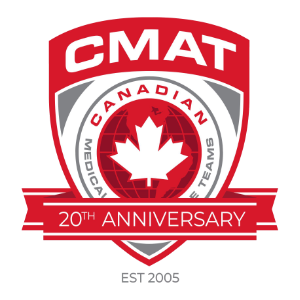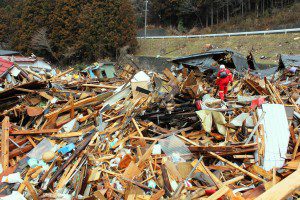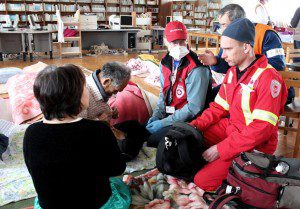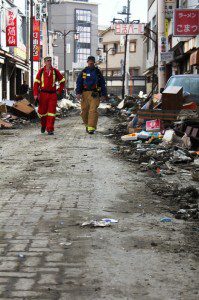
CMAT paramedic Martin Metz and OT Seiko Watanabe install a Nomad water purification system in the town of Aikawa Kitakamicho.
Tuesday, March 29, 2011 – Ishinomaki, Miyagi, Japan- The CMAT Medical Team continues to work in the communities surrounding Ishinomaki, and is slowing winding up its operations in Japan. While visiting evacuation centres in several small villages along the coast, team members provided first aid and some primary medical care to the evacuees. Many of the patients that the team saw were elderly, and had chronic illnesses like diabetes and high blood pressure.
Meanwhile, other members of the team were awaiting delivery of the Nomad water purification unit. The purchase of this portable water purification system manufactured by Noah Water Systems was made possible through the generous support of our donors, especially the Lotus Light Charity Society from Vancouver. The unit is capable of producing 25 gallons / 95 litres per minute or 36,000 gallons / 136,800 liters per day. The Nomad will satisfy the need for large volumes of safe drinking water using any fresh water source: well, lake, river, stream, and pond and even polluted floodwaters.






